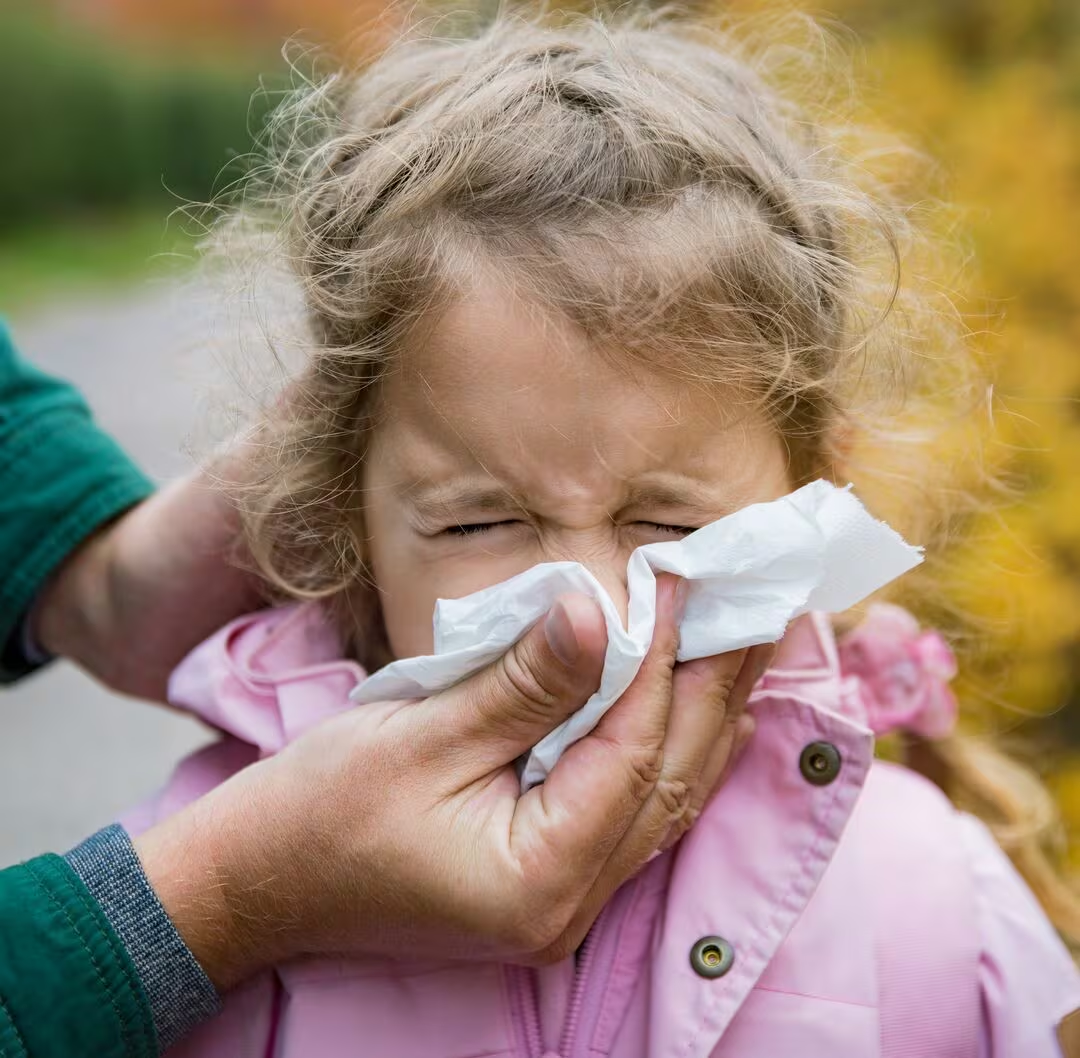Seasonal allergies, also referred to as hay fever or allergic rhinitis, impact millions of children globally. When flowers start blooming and trees shed pollen, most children suffer from sneezing, watery eyes, and runny noses, which make it hard for them to play outdoors.
If your child has seasonal allergies, don’t worry. Based on the American College of Allergy, Asthma & Immunology (ACAAI) data, approximately 40% of children have allergic rhinitis. The good news is that with appropriate measures, you can effectively alleviate your child’s symptoms.
In this exhaustive guide, we will cover:
- What Causes Seasonal Allergies in Children?
- Common Symptoms of Hay Fever in Kids
- Diagnosing Seasonal Allergies
- Effective Treatment Options
- Natural and Home Remedies
- Preventive Measures to Reduce Exposure
- When to See a Doctor
By the end of this article, you’ll have a clear action plan to help your child breathe easier and enjoy the changing seasons without constant discomfort.
1. What Causes Seasonal Allergies in Children?
Seasonal allergies occur when a child’s immune system overreacts to outdoor allergens such as:
- Tree pollen (common in spring)
- Grass pollen (common in late spring and summer)
- Weed pollen (especially ragweed in fall)
- Mold spores (favors wet conditions, prevalent in summer and autumn)
When they get into the body, the immune system confusedly recognizes them as dangerous invaders and releases histamine, an allergen trigger chemical that stimulates allergy symptoms such as sneezing, itchiness, and congestion.
Risk Factors for Seasonal Allergies in Children
- Family history – Kids who have parents suffering from allergies tend to develop the same.
- Exposure to allergens – Residing in regions of high pollen counts raises risk.
- Other allergic disorders – Children with asthma or eczema are at higher risk for hay fever.
2. Frequent Signs of Hay Fever in Children
A cold, which remains for a week or two, has different symptoms as compared to seasonal allergy symptoms, which remain for as long as the child remains in contact with the allergen. Frequent signs are:
- Frequent sneezing
- Stuffy or runny nose
- Red or watery or itchy eyes
- Scratchy throat or cough
- Dark circles around the eyes (allergic shiners)
- Fatigue and crankiness (due to poor sleep caused by congestion)
In some children, there can also be:
- Ear congestion
- Lost sense of smell or taste
- Exacerbation of asthma symptoms (wheezing, shortness of breath)
Note: If your child has a fever or yellow/green nasal discharge, then they likely have an infection of the sinuses and not allergies, and need to see a doctor.
3. Diagnosing Seasonal Allergies
If you suspect your child has hay fever, consult a pediatrician or allergist. They may recommend:
a) Allergy Testing
- Skin prick test – Small amounts of allergens are applied to the skin to check for reactions.
- Blood test (IgE test) – Measures allergy-related antibodies in the blood.
b) Symptom Tracking
Keeping an allergy diary can help identify triggers by noting:
- When symptoms occur
- Pollen counts on high-symptom days
- Activities that worsen allergies (e.g., playing outside)
4. Successful Treatment Options for Childhood Hay Fever
After diagnosis, a few treatments can ease symptoms:
a) Antihistamines
- Examples: Cetirizine (Zyrtec), Loratadine (Claritin), Fexofenadine (Allegra)
- How they work: Block histamine to slow sneezing, itching, and runny nose.
- Best for: Mild to moderate allergies (non-drowsy forms are best for children).
b) Nasal Corticosteroids
- Examples: Fluticasone (Flonase), Budesonide (Rhinocort)
- How they work: Shrink nasal swelling.
- Best for: Long-lasting congestion (can take a few days to be effective).
c) Decongestants
- Examples: Pseudoephedrine (Sudafed) – not for young children unless doctor’s approval.
- How they work: Reduce swollen nasal tissues for temporary relief.
- Caution: May lead to rebound congestion if used too much.
d) Eye Drops (for Itchy Eyes)
- Examples: Ketotifen (Zaditor), Olopatadine (Patanol)
- How they work: Relieve redness and itching due to pollen exposure.
e) Allergy Shots (Immunotherapy)
For severe cases, an allergist might prescribe allergy shots, which gradually desensitize the immune system to allergens.
5. Natural and Home Remedies for Seasonal Allergies
Besides drugs, these natural methods can alleviate symptoms:
a) Saline Nasal Rinse
- Neti pot or saline spray washes away pollen and decongests.
- Tip: Use distilled or boiled water to prevent infections.
b) Local Honey (Limited Evidence)
- Some parents think that eating local honey builds up immunity to pollen.
- Note: There is limited scientific evidence, but it is safe in moderation for children aged more than 1 year.
c) Air Purifiers & HEPA Filters
- Removes pollen, dust, and mold from indoor air.
- Ideal for: Bedrooms and living rooms.
d) Steam Inhalation
- Inhaling warm steam (with a few drops of eucalyptus oil) can unclog nasal passages.
e) Anti-Inflammatory Diet
- Foods high in omega-3s (fish, flaxseeds), vitamin C (oranges, bell peppers), and quercetin (apples, onions) might curb inflammation.
6. Preventive Measures to Lessen Pollen Exposure
Prevention is the best way to minimize allergy flare-ups. Try these tips:
a) Monitor Daily Pollen Counts
- Check counts on Weather.com or Pollen.com daily.
- Reduce outdoor play when high counts occur (especially in mornings).
b) Seal Windows
- Operate air conditioning, but don’t open windows, to block out pollen.
c) Shower Off Pollen
- Pollen clings to skin and hair—washing off avoids symptoms at night.
d) Regularly Wash Bedding
- Have pillows and mattresses covered with hypoallergenic pillowcases and mattress pads.
- Hot-water washing of sheets every week gets out allergens.
e) Do Not Line-Dry Clothes Outdoors
- Pollen sticks to fabrics—use a dryer instead.
7. When to Seek a Doctor
Though most seasonals can be treated at home, see a doctor if:
- Symptoms are interfering with sleep, school, or daily activity.
- Over-the-counter medication is not effective.
- Your child begins wheezing, having trouble breathing, or develops a persistent cough (potentially asthma).
- Symptoms persist year-round (can be sign of indoor allergies such as dust mites or pet dander).
Conclusion
Controlling your child’s seasonal allergy involves a balance of preventive precautions, good therapies, and way-of-life adjustments. By becoming aware of cause, applying the right medicines responsibly, and lessening exposure to pollen, your child can lead a happy outdoors life without eternal sneezing and scratching.
In case your child continues with symptoms, you don’t have to wait, and seek expertise. With an appropriate strategy, hay fever no longer needs to spoil your kid’s springtime and summer life!



